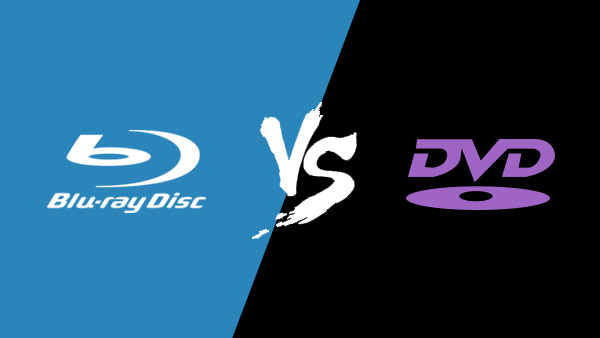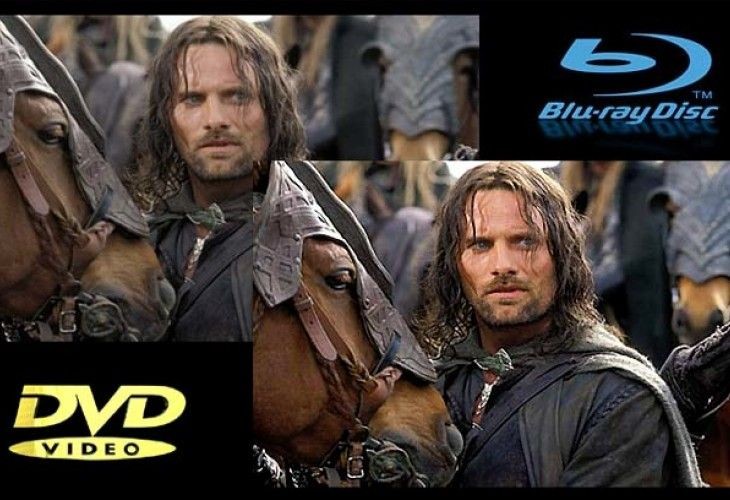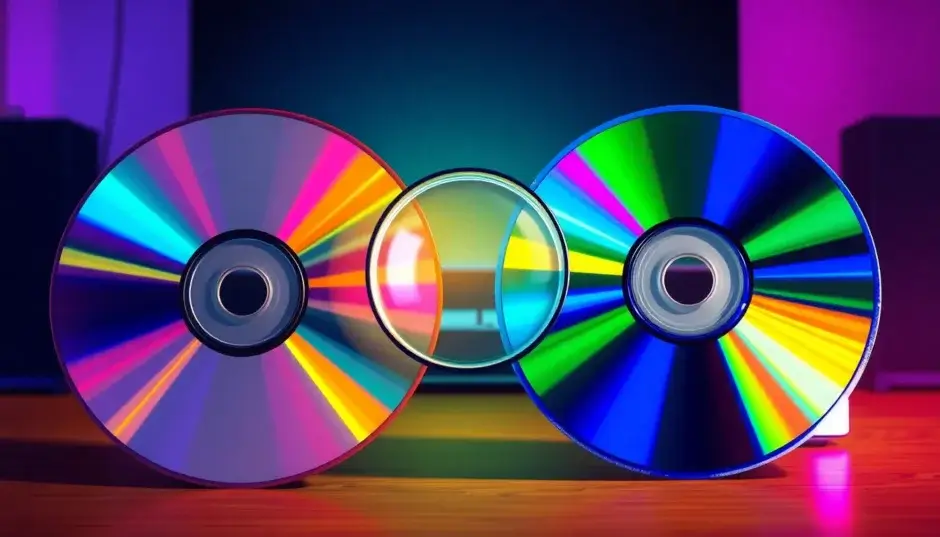Remember that moment in the store, staring at shiny discs while wondering about the blu ray vs dvd choice? Or digging through old movies unsure about upgrading? You’re definitely not alone! This comparison isn’t just tech jargon – it affects movie nights and storage solutions everywhere. Let’s unpack these formats step by step, looking at how they really differ and which might fit your life best. We’ll also explore how to bridge the gap to digital viewing.
Convert DVDs to over 1000 video and audio file formats such as MP4, MKV, and MP3. A disk of about 2 hours can be converted in about 5 minutes, allowing you to enjoy it comfortably on each mobile device and home theater.
Get Windows Version | Get Mac Version | Use the Time-limited Promotional Campaign
Understanding Blu-ray and DVD Fundamentals
Before jumping into comparisons, let’s clarify what each format actually is. The core technology explains why they perform so differently.
Breaking Down Blu-ray Technology
Imagine needing serious space for HD movies and games. That’s where Blu-ray shines! Designed as the DVD successor, it uses a unique blue-violet laser (hence the name) instead of DVD’s red laser. This tech leap allows incredible storage: 25GB on a single layer, doubling to 50GB on dual-layer discs. That’s over five times a standard DVD’s capacity! This massive space stores full 1080p HD (and 4K UHD on newer discs), delivering stunning detail, richer colors, and depth DVDs can’t match. Beyond movies, it’s perfect for large video games and interactive content.
DVD’s Enduring Legacy
DVD (Digital Versatile Disc or Digital Video Disc) entered the scene in 1995, revolutionizing home viewing after VHS tapes. A single-layer holds 4.7GB, dual-layer up to 8.5GB – huge back then! DVDs typically play in standard definition (480p), though some players upscale them. Unlike old tapes, replaying doesn’t degrade quality. Their biggest strength? Universal compatibility. Pop one into almost any DVD player or computer drive. For pre-2010 films and shows, DVD remains the primary physical release.

Seeing them side-by-side hints at the difference between blu ray and dvd, but the real contrast lies inside.

Want to enhance DVD quality? Consider DVDFab DVD to Blu-ray Converter!
Detailed Feature Comparison: Blu-ray vs DVD
Let’s examine how these formats stack up across key areas that impact your viewing and usage:
| Feature | DVD | Blu-ray |
|---|---|---|
| Storage Space | Single-Layer: 4.7GB, Dual-Layer: 8.5GB | Single-Layer: 25GB, Dual-Layer: 50GB+ |
| Picture Quality | Standard Definition (480p max), Upscaled possible | Full HD (1080p), 4K UHD on newer discs |
| Sound Quality | Dolby Digital, DTS surround | Lossless Dolby TrueHD, DTS-HD MA, Dolby Atmos |
| Player Compatibility | Plays almost everywhere | Needs Blu-ray player (plays DVDs too) |
| Laser Type | Red Laser (650nm) | Blue-Violet Laser (405nm) |
| Price Point | Generally lower cost | Higher, though prices have dropped |
| Release Year | 1995 | 2006 |
Storage Capacity Face-Off
The core difference between dvd and blu ray starts here. Think suitcase packing: A DVD holds 4.7GB (single-layer) or 8.5GB (dual), enough for a movie in SD with extras. Blu-ray? A massive 25GB (single) or 50GB (dual). This enormous space stores HD/4K video files, extensive director’s cuts, multiple language tracks, and HD extras without compromise. For pure storage power in the blu ray vs dvd matchup, Blu-ray dominates.
Seeing the Picture Quality Difference
This is where the dvd vs blu ray choice becomes visible. DVDs max out at 480p resolution. While players and TVs upscale this, it’s stretching limited data – often looking soft or pixelated on large screens. Blu-ray delivers native 1080p HD (1920×1080 pixels) with sharper images, richer colors, deeper blacks, and incredible detail like fabric textures or facial expressions. 4K UHD Blu-rays go further with 3840×2160 resolution and HDR for lifelike vibrancy. If image quality matters, Blu-ray wins the blu ray dvd vs dvd contest.
Hearing the Audio Upgrade
Great visuals need great sound. DVDs use compressed formats like Dolby Digital, losing some audio fidelity. Blu-ray’s spacious discs accommodate lossless formats like Dolby TrueHD and DTS-HD Master Audio, reproducing studio-quality sound precisely. You get wider dynamic range (quieter whispers, louder booms), clearer dialogue, punchier bass, and immersive surround sound. Many include Dolby Atmos or DTS:X for 3D overhead effects. For sound enthusiasts, this audio edge makes Blu-ray compelling in the difference between blu ray and dvd.
Compatibility Considerations
Here’s a key practical difference: Blu-ray players play DVDs, but DVD players CAN’T play Blu-rays. DVD players lack the blue laser needed to read Blu-ray’s denser data. Upgrading to a Blu-ray player won’t make your DVD collection obsolete. But using Blu-rays requires that upgrade. Check your devices – many game consoles (PlayStation/Xbox) double as Blu-ray players. This compatibility aspect is crucial in the dvd vs blu ray decision.
Why Data Speed Matters
Ever notice streaming stutter? Discs have similar issues. Blu-ray’s faster data transfer rate (thanks to its precise blue laser reading smaller data pits) handles HD/4K video smoothly. Slower DVD speeds can cause hiccups during intense scenes. For seamless playback in the blu ray vs dvd race, Blu-ray has the advantage.
Cost Comparison Over Time
Historically, Blu-ray players and discs cost significantly more. Prices have dropped considerably! Blu-ray players start reasonably now, and movie prices often match DVDs during sales. However, DVDs remain cheaper overall, especially for budget players and discount bins. New 4K Blu-rays still carry a premium. While the gap narrows, DVD keeps the budget-friendly crown in the difference between dvd and blu ray cost analysis.
Matching Formats to Your Needs
Your usage determines the best choice:
DVD excels when:
- Watching classic pre-2010 films/TV shows
- Needing universal playback compatibility
- Backing up documents or smaller files
- Playing music/audiobooks in older car systems
- Budget-conscious viewing on smaller/SD screens
Blu-ray shines for:
- Home theater setups with HDTV/projector and sound system
- 4K UHD viewing on compatible TVs
- Storing large data archives (photos, videos, projects)
- Major new film releases and prestige TV box sets
- Modern gaming consoles requiring large capacities
Making Your blu ray vs dvd Decision:
- Pick DVD for: Older content, maximum compatibility, tight budgets, or basic data backup.
- Choose Blu-ray for: Premium picture/sound on HDTV/4K setups, newer releases, or large-capacity archiving.
DVD vs Blu-ray: Is Older Actually Better?
Objectively? On specs – capacity, resolution, audio, speed – Blu-ray outperforms DVD. No debate. But “better” depends on context:
- DVDs cost less upfront
- DVDs play almost anywhere
- Many older titles only exist on DVD If you own older equipment, have a large DVD collection, or prioritize savings, DVD remains practical. Most new releases still offer DVD versions too. So while Blu-ray offers superior quality, DVD’s relevance persists, making the dvd vs blu ray choice about your specific needs, not absolute winners.

Cost and compatibility favor DVD, but Blu-ray excels technically – a clear difference between blu ray and dvd.
4K Blu-ray: The Next Evolution
Just when you grasp blu ray vs dvd, 4K Blu-ray (Ultra HD Blu-ray) emerges. It delivers native 4K resolution (3840×2160 pixels – four times Full HD!) and High Dynamic Range (HDR) for stunning color/contrast. Brighter whites, deeper blacks, vibrant colors pop off-screen.
Should you upgrade? Consider:
- Do you own a 4K HDR TV? Essential. A 4K player on an HDTV won’t show true 4K/HDR benefits.
- Planning a 4K TV upgrade soon? Makes sense, as 4K players also play standard Blu-rays and DVDs.
Without a 4K TV or plans to get one, a standard Blu-ray player suffices. The blu ray dvd vs dvd comparison evolves with this higher tier when your display supports it.
Digitizing Your Collection: DVD & Blu-ray to Digital
Physical discs offer quality, but carrying cases isn’t practical. Want movies on your tablet, laptop, or media server? Ripping copies content to digital files (MP4, MKV, etc.), stored on devices or cloud.
Benefits include:
- Carry hundreds of titles on a portable drive
- Instantly play without disc swapping
- Watch on devices lacking disc drives
- Preserve discs from damage/loss
- Reduce physical clutter
The Hurdle: DVDs (CSS) and Blu-rays (AACS) have copy protection. Standard copying fails. You need specialized software.
Solution Spotlight: DVDFab DVD Ripper & Blu-ray RipperThese tools handle the difference between dvd and blu ray protections, converting discs into versatile digital formats.
Convert DVDs to over 1000 video and audio file formats such as MP4, MKV, and MP3. A disk of about 2 hours can be converted in about 5 minutes, allowing you to enjoy it comfortably on each mobile device and home theater.
Get Windows Version | Get Mac Version | Use the Time-limited Promotional Campaign

Unlock your discs for digital freedom with DVDFab Ripper.
Why Choose DVDFab for Ripping?
DVDFab leads in disc solutions. Here’s why their Rippers excel:
- Decrypts Latest Protections: Regularly updated to bypass new DVD/Blu-ray encryptions, handling even recent releases.
- Massive Format Library: Converts to 1000+ video/audio formats – ideal for phones, tablets, gaming consoles, or media servers.
- Super-Fast GPU Acceleration: Uses your computer’s graphics card (NVIDIA CUDA/NVENC, Intel Quick Sync) to rip HD/4K content rapidly. Batch process multiple titles.
- Device-Specific Presets: Pre-optimized profiles for 245+ devices (iPhone, Android, PS5, Xbox, etc.). Pick your device; settings auto-adjust.
- Built-In Video Editor: Customize output:
- Trim/split videos
- Crop frames
- Add watermarks/subtitles
- Adjust brightness/contrast
- Automatic Metadata: Fetches and embeds title, cast, director, genre, plot, and cover art for organized media libraries (Plex/Kodi).
- Rip Main Movie or Full Disc: Save space with just the film or keep menus/extras for full backups.
- Works Beyond Discs: Handles physical discs, ISO files, and copied folders.
Step-by-Step Ripping Guide:
- Download & Install: Get DVDFab Ripper for Windows or macOS from their official site. Install normally.
- Insert Disc: Place your DVD/Blu-ray in your computer drive (Blu-ray ripping requires a Blu-ray drive).
- Open DVDFab: Launch the app. It usually auto-detects the disc.
- Select Ripper Mode: Click the “Ripper” icon.
- Choose Source & Title: Confirm the disc. Select the main movie title (usually largest).
- Pick Output Format: Browse options:
- Device Tab: Select your specific device.
- Format Tab: Choose MP4, MKV, etc.
- Video Tab: Manually pick codecs/resolutions.
- (Optional) Edit Video: Click “Advanced Settings/Edit” to trim, crop, or add subtitles/watermarks.
- (Optional) Set Save Location: Choose an output folder.
- Start Conversion: Click “Start”. DVDFab decrypts, converts, and shows progress. GPU acceleration speeds up Blu-ray ripping significantly.
- Enjoy Digitally: Find your file post-conversion. Transfer to devices or add to media servers.
DVDFab bridges the physical dvd vs blu ray world and digital convenience, letting you enjoy your collection anywhere.
Blu-ray vs DVD Common Questions Answered
Let’s tackle frequent blu ray vs dvd queries:
Is buying Blu-ray worth the extra cost?
It hinges on your setup:
- Worth it if: You own a quality HDTV (50″+) or 4K TV, have decent sound, value top-tier AV quality, or collect premium physical media.
- Maybe not if: You watch on small/SD TVs, laptops, or phones where differences lessen; prefer streaming’s convenience/variety; or mainly view older DVD-only titles.
Weigh the difference between dvd and blu ray quality against the cost per title and potential player upgrade.
What was Blu-ray vs HD DVD?
In the mid-2000s, Blu-ray battled HD DVD to succeed DVD. Key dvd vs blu ray successor differences:
- Capacity: HD DVD: 15GB/30GB per layer. Blu-ray: 25GB/50GB – more room for quality.
- Tech: Different lasers/disc structures made them incompatible.
- Support: Blu-ray gained more studio/tech backing (Sony, Disney).
- Result: Blu-ray won by 2008. HD DVD is defunct.
Can a DVD player read Blu-ray discs?
No. This is a critical difference between blu ray and dvd tech. DVD players use a red laser incapable of reading Blu-ray’s denser, smaller data pits. They lack the needed hardware. But: Blu-ray players include both lasers, playing DVDs perfectly. Always check player specs.
Final Thoughts: Picking What Works For You
The blu ray vs dvd debate isn’t about universal “best” – it’s about fit:
- Blu-ray: The tech leader for capacity, HD/4K video, lossless audio, and speed. Ideal for modern home theaters and quality seekers.
- DVD: The budget-friendly, universally compatible choice for older films, basic viewing, or data backups.
Your dvd vs blu ray decision depends on:
- Current equipment (TV/sound system)
- Budget for players and discs
- Viewing priorities (convenience vs. quality)
- Content preferences (new releases vs. classics)
Looking ahead: Streaming dominates, but Blu-ray/4K Blu-ray thrive among AV enthusiasts wanting peak quality without streaming limitations. DVDs remain widely playable for years due to massive legacy support. The blu ray dvd vs dvd landscape offers choices.
For your existing discs: Tools like DVDFab DVD Ripper and DVDFab Blu-ray Ripper are game-changers. They remove physical limitations, letting you convert collections to digital files for any device. It’s perfect for preservation and flexible viewing, regardless of your format choice.
Convert DVDs to over 1000 video and audio file formats such as MP4, MKV, and MP3. A disk of about 2 hours can be converted in about 5 minutes, allowing you to enjoy it comfortably on each mobile device and home theater.
Get Windows Version | Get Mac Version | Use the Time-limited Promotional Campaign
Understanding the difference between blu ray and dvd empowers smarter choices for building and enjoying your media library. Happy viewing!
Note: All product images sourced from DVDFab.
 TOOL HUNTER
TOOL HUNTER



